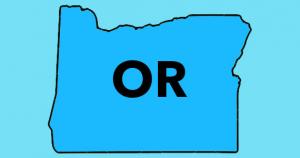Oregon: CMS approves keeping Medicaid coverage for residents earning up to 200% FPL ahead of Basic Health Plan implementation

About a year ago, I noted that the state of Oregon had passed a bill which, if the federal waiver is approved by the federal government, would make them the third state in the U.S. to establish a Basic Health Plan program under the Affordable Care Act. As reported by Megan Messerly of Politico at the time:
In Oregon, Democrats passed a bill in March to establish a basic health program, the details of which are being ironed out by a task force that began meeting this week. In Kentucky, Republicans approved $4.5 million in state funds this spring to set up a basic health program, which was signed into law by the state’s Democratic governor. An estimated 85,000 Oregonians and at least 37,000 Kentuckians will be eligible to enroll in the plans as soon as next year.
Unfortunately, Kentucky later appears to have gotten cold feet on their BHP implementation, but Oregon is still full steam ahead as far as I know.
In October of last year, The Lund Report gave an update on the status of Oregon's BHP program:
...The Bridge Health Program, as it is called, would be available to individuals making under 200% of the federal poverty level...Those above 200% of poverty will still be eligible for coverage on the health insurance marketplace.
...The path the task force decided to take — with input from the Centers for Medicare and Medicaid Services — was to create a basic health plan utilizing a federal program known as the 1331 waiver. It's named for the section of the 2010 Affordable Care Act that authorized it.
...The program's biggest target, at least initially, is individuals who have remained on OHP during the coronavirus pandemic despite no longer qualifying.
...The Oregon Health Authority estimates as many as 300,000 Oregonians could lose OHP insurance after the public health emergency ends.
Of that number, state officials estimate the bridge program could enroll an estimated 55,000 people in 2023.
That highlighted portion above is key, as it refers to the millions of people nationally who have been on Medicaid or CHIP throughout the pandemic but who have started to be kicked off in some states since the beginning of April, when the continuous coverage provisions sunsetted.
More recently, Joel Ario, Tara Straw & Amy Zhan posted another update on the status of the program at JD Supra:
The Glide Path to a Permanent Affordable Coverage Option in Oregon
Oregon is taking an incremental approach with its implementation of a permanent affordable coverage option for low-income Oregonians. With an eye toward the end of the federal continuous coverage requirement, Oregon is first seeking a temporary Medicaid section 1115 waiver demonstration amendment (Phase 1) to immediately preserve OHP coverage for individuals with incomes 139 percent to 200 percent of the FPL. The section 1115 waiver would allow individuals enrolled in OHP coverage with a CCO to remain on that same OHP coverage with the same CCO as they had while continuous coverage requirements were in place. This waiver would take effect April 1, 2023, and remain in place until the state implements a BHP.
The state is then seeking to implement a BHP, which would offer benefits that align with the OHP benefits package, have no-to-low premiums and cost-sharing, and be delivered by existing CCOs. Enrollment in the BHP would have two discrete phases.
First, the state would seek to implement a “limited” BHP (Phase 2), meaning only individuals covered under the temporary Medicaid section 1115 waiver (i.e., individuals enrolled in OHP with an income 139 percent to 200 percent of the FPL) would be eligible for BHP coverage. Individuals with incomes from 139 percent to 200 percent of the FPL who are uninsured or enrolled in Marketplace coverage would not be eligible for BHP coverage at this stage. The limited BHP is slated to launch in mid-2024.
Following implementation of the limited BHP, the state would seek to implement a “full” BHP (Phase 3), expanding eligibility to include all individuals in Oregon with incomes 139 percent to 200 percent of the FPL, including individuals who are uninsured or would otherwise be enrolled in Marketplace coverage. The full BHP would be implemented within 24 months of implementation of the limited BHP, meaning no later than January 1, 2026 (see Figure 2 below for summary of Oregon’s proposed glide path).
Last week, the Centers for Medicare & Medicaid Services approved Oregon's 1115 waiver (Phase 1):
CMS Approves Oregon Health Plan Demonstration Amendment Helping Individuals Maintain Medicaid Coverage
April 20: CMS approved an amendment to the Oregon Health Plan (OHP) demonstration that authorizes Medicaid coverage for individuals ages 19 through 64, with incomes from 133 through 200 percent of the federal poverty level, who are currently enrolled in OHP under a guarantee of continued eligibility originally enacted in the Families First Coronavirus Response Act (FFCRA), which expired April 1. The amendment will help maintain coverage following the expiration of the Medicaid continuous enrollment provision under FFCRA. This amendment will streamline retention of coverage by not requiring people to move to the Marketplace. The state is actively exploring options for long-term coverage for this population, including potentially establishing a Basic Health Program. Information can be found here.
How to support my healthcare wonkery:
1. Donate via ActBlue or PayPal
2. Subscribe via Substack.
3. Subscribe via Patreon.



